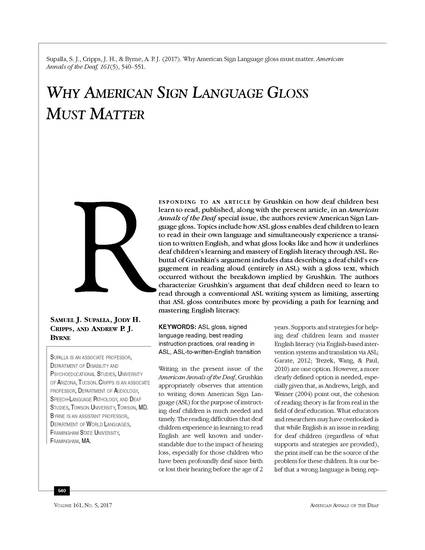
Article
Why American Sign Language Gloss Must Matter
American Annals of the Deaf
(2017)
Abstract
Responding to an article by Grushkin on how deaf children best learn to read, published, along with the present article, in an American Annals of the Deaf special issue, the authors review American Sign Language gloss. Topics include how ASL gloss enables deaf children to learn to read in their own language and simultaneously experience a transition
to written English, and what gloss looks like and how it underlines deaf children’s learning and mastery of English literacy through ASL. Rebuttal of Grushkin’s argument includes data describing a deaf child’s engagement in reading aloud (entirely in ASL) with a gloss text, which occurred without the breakdown implied by Grushkin. The authors characterize Grushkin’s argument that deaf children need to learn to read through a conventional ASL writing system as limiting, asserting that ASL gloss contributes more by providing a path for learning and mastering English literacy.
Keywords
- ASL Gloss,
- Signed Language Reading,
- Best Reading Instruction Practices,
- Oral Reading in ASL,
- ASL-to-Written-English Transition
Disciplines
Publication Date
2017
Publisher Statement
Gallaudet University
Citation Information
Samuel J Supalla, Jody H Cripps and Andrew P J Byrne. "Why American Sign Language Gloss Must Matter" American Annals of the Deaf Vol. 161 Iss. 5 (2017) p. 541 - 551 Available at: http://works.bepress.com/jody-cripps/30/
